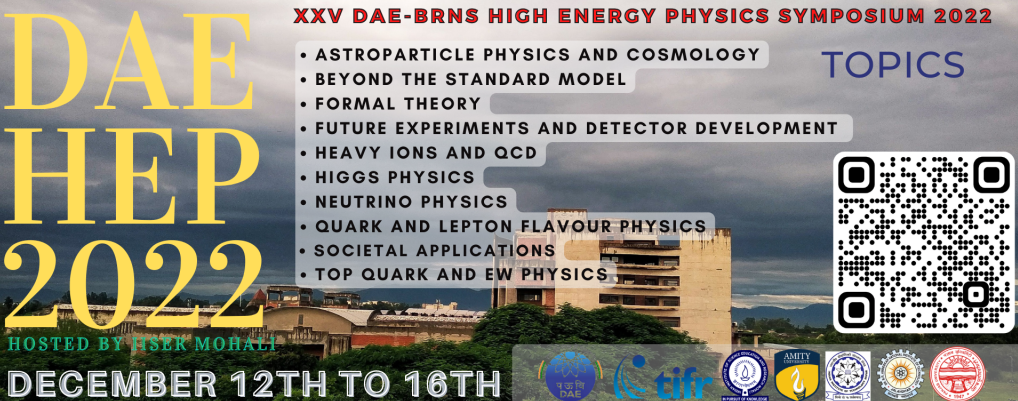Speaker
Description
Quark gluon plasma (QGP) is a thermalized color deconfined QCD matter created at extreme conditions such as very high temperature and/or density in ultra relativistic heavy-ion collisions. The formation of QGP has been confirmed at the LHC and RHIC experiments by comparison of low momentum ($p_\perp$) measurements with relativistic hydrodynamic predictions, and, by comparison of high $p_\perp$ data with pQCD predictions. While high $p_\perp$ physics had a decisive role in the QGP discovery, it was rarely used for understanding the bulk properties. On the other hand, high $p_\perp$ probes become also powerful tomography tools, since they are sensitive
to global QGP features, such as different temperature profiles or initial conditions. Further, the low $p_\perp$ observables do not put strict constraints on all the parameters of the models used to describe the evolution of QGP, leaving some properties of QGP badly constrained.
Therefore, high $p_\perp$ observables can be used to improve the constraints to the parameters, complementing the low $p_\perp$ ones. In this work, we perform analysis to determine if the high $p_\perp$ observables can distinguish the specific shear viscosity ($\eta/s$) of the system. We use $`$T$_\text{R}$ENTo' framework to generate initial profiles, evolve the fluid with $(2+1)$-dimensional viscous hydrodynamics code $`$VISH2+1'. The particlization is performed using Cooper-Frye prescription, and finally, we use $`$UrQMD' hadronic afterburner to produce the low $p_\perp$ observables. To achieve the goal of utilizing high $p_\perp$ theory and data for inferring the bulk properties of QGP, a dynamical high $p_\perp$ parton energy loss formalism has been developed. This formalism is based on finite size, finite temperature field theory and takes into account that QGP constituents are dynamical particles. Both collisional and radiative energy losses are calculated in the same theoretical framework. Finally, this formalism is integrated into a numerical framework $`$DREENA' (Dynamical Radiative and Elastic ENergy loss Approach). This has been used to compute the high $p_\perp$ observables.
| Session | Heavy Ions and QCD |
|---|
